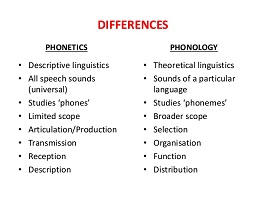Cognitive rigidity and Disorders or pathologies associated with cognitive rigidity
What is cognitive rigidity
Cognitive rigidity can be defined as the impossibility of performing other types of behaviors and/or beliefs that represent a novelty for the person. In other words, it consists of sustaining the same ideas, behaviors and beliefs over time, without any possibility of change.
Consequently, this leads to a complexity of mental health that can cause various conflicts at work, in social and family relationships. In addition to the fact that we are talking about a certain person, cognitive rigidity can also be reflected in the difficulty of accepting other points of view on certain events.
Disorders or pathologies associated
Cognitive rigidity implies the presence of some mental health problems in which this condition manifests itself. Below you will find the disorders or pathologies associated with cognitive rigidity:
Autism spectrum disorder: although it is true that autism has many nuances, in these cases there is great difficulty in adapting to changes that occur in habits and routines.
- Obsessive-compulsive disorder: people who constantly and continuously perform various rituals are generally quite reticent to the changes that may be manifested. Therefore, when certain variations occur, they often trigger levels of nervousness, anxiety, fear and anger that are difficult to deal with.
- Attention deficit disorder: although this pathology is usually diagnosed at school age, people who have difficulties in maintaining attention adopt specific and consistent strategies to achieve this goal. In the face of changes, concentration levels drop considerably.
- Depressive disorder: The symptoms that characterize depression represent an obstacle to change. When they occur, the person responds negatively because the outlook on life does not change much.
- Eating disorders : although bulimia and anorexia are the best known, the pathologies that are characterized by eating disorders maintain a difficulty in tolerating changes in life patterns.
- Psychotic disorders: these types of psychiatric pathologies are serious because certain circumstances must be faced inflexibly so that there are no decompensations.
How to assess cognitive rigidity
It is important to establish strategies to detect this problem in time and find alternatives for the life of a person suffering from this difficulty. One way is the neuropsychological assessment, as well as some other instruments that can be used to assess cognitive rigidity, which we show below:
- Inattention Test: This consists of tapping buttons when yellow lights appear on a screen. However, you should not press any buttons when they change color.
- Simultaneity test: inside a screen, the person must follow the path of a white ball and pay attention to certain words. When there is a match between the word and its color, an answer must be given. This test tests the degree of attention and adaptation to changes.
- Synchronization Test: The objective is to coordinate the movement of a ball with the pointer on the screen. In this way, the synchronicity between the movements is evaluated.
How to work on cognitive rigidity
Despite the difficulties that this quality brings, there are some methods that allow you to establish a treatment. In this section, we show you how you can work on cognitive rigidity:
- Setting new goals: renewing goals requires different strategies to achieve what is proposed. On a piece of paper or document, it is advisable to write down the goals that you want to achieve.
- Psychological therapy: going to a mental health professional helps to discard beliefs that are taken as absolute truths. In this way, therapy invites us to reflect on the points of view we adopt in life.
- Changing habits: in addition to having incorporated certain knowledge, the modification of routines, behaviors and ideas seeks to implement greater flexibility.
- Physical exercise: the release of endorphins produces relaxation in the central nervous system. This in turn has the effect of increasing cognitive flexibility.
- Use artistic means: it is known that art is one of the means of expressing feelings. In this sense, there are no rigid and specific standards to follow, since there are no established rules in the art. The practice of some artistic activity helps to work on cognitive rigidity.

